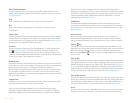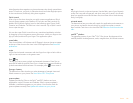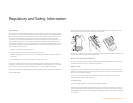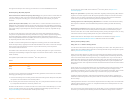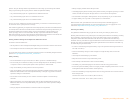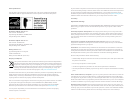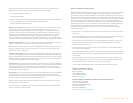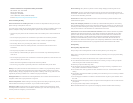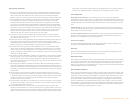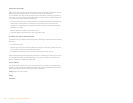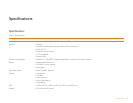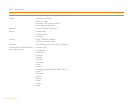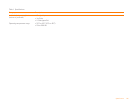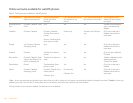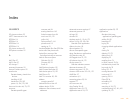182 Regulatory and Safety Information
National Institute for Occupational Safety and Health
395 E Street, S.W., Suite 9200
Patriots Plaza Building
Washington, DC 20201
Voice: 1-800-CDC-INFO (1-800-232-4636)
Internet: http://www.cdc.gov/niosh/topics/noise/
Product Handling & Safety
General statement on handling and use: You alone are responsible for how you use your
phone and any consequences of its use.
You must always switch off your phone wherever the use of a phone is prohibited. Use of your
phone is subject to safety measures designed to protect users and their environment.
• Always treat your phone and its accessories with care and keep it in a clean and dust-free
place.
• Do not expose your phone or its accessories to open flames or lit tobacco products.
• Do not expose your phone or its accessories to liquid, moisture, or high humidity.
• Do not drop, throw, or try to bend your phone or its accessories.
• Do not use harsh chemicals, cleaning solvents, or aerosols to clean the device or its
accessories.
• Do not paint your phone or its accessories.
• Do not attempt to disassemble your phone or its accessories; only authorized personnel
must do so.
• Do not expose your phone or its accessories to extreme temperatures, minimum 14° F and
maximum 140° F (-10° C to 60° C).
• Please check local regulations for disposal of electronic products.
• Do not carry your phone in your back pocket as it could break when you sit down.
Battery: Your phone includes an internal lithium-ion or lithium-ion polymer battery. Please
note that use of certain data applications can result in heavy battery use and may require
frequent battery charging. Any disposal of the phone or battery must comply with laws and
regulations pertaining to lithium-ion or lithium-ion polymer batteries.
Demagnetization: To avoid the risk of demagnetization, do not allow electronic devices or
magnetic media close to your phone for a long time.
Normal use position: When making or receiving a phone call, hold your phone to your ear,
with the bottom towards your mouth or as you would a fixed line phone.
Emergency calls: This phone, like any wireless phone, operates using radio signals, which
cannot guarantee connection in all conditions. Therefore, you must never rely solely on any
wireless phone for emergency communications.
Phone heating: Your phone may become warm during charging and during normal use.
Accessories: Use only approved accessories. Do not connect with incompatible products or
accessories. Take care not to touch or allow metal objects, such as coins or key rings, to contact
or short-circuit the battery terminals.
Connection to a car: Seek professional advice when connecting a phone interface to the
vehicle electrical system.
Faulty and damaged products: Do not attempt to disassemble the phone or its accessory.
Only qualified personnel must service or repair the phone or its accessory. If your phone or its
accessory has been submerged in water, punctured, or subjected to a severe fall, do not use it
until you have taken it to be checked at an authorized service center.
Interference in cars and to other Electronic Devices: Please note that because of possible
interference to electronic equipment, some vehicle manufacturers forbid the use of mobile
phones in their vehicles unless a hands-free kit with an external antenna is included in the
installation. RF energy may affect improperly installed or inadequately shielded electronic
operating and entertainment systems in motor vehicles. Check with the manufacturer or
representative to determine if these systems are adequately shielded from external RF energy.
Also check with the manufacturer of any equipment that has been added to the vehicle.
Driving Safety
Driving Safety Tips Overview
Always obey all laws and regulations on the use of the phone in your driving area.
Safety–Your most important call. The Wireless Industry reminds you to use your phone safely
when driving.
1 Get to know your phone and its features, such as speed-dial and redial.
2 Use a hands-free device where it is allowed. In some areas, you may not use your phone
while driving even with a hands-free accessory.
3 Position your phone within easy reach.
4 Let the person you are speaking to know you are driving; if necessary, suspend the call in
heavy traffic or hazardous weather conditions.
5 Do not take notes, look up phone numbers, read/write e-mail, or surf the Internet while
driving.
6 Dial sensibly and assess the traffic; if possible, place calls when you are not moving or before
pulling into traffic.
7 Do not engage in stressful or emotional conversations that may divert your attention from
the road.
8 Dial your national emergency number to report serious emergencies. This is a free call from
your phone.
9 Use your phone to help others in emergencies.
10 Call roadside assistance or a special non-emergency wireless number when necessary.



